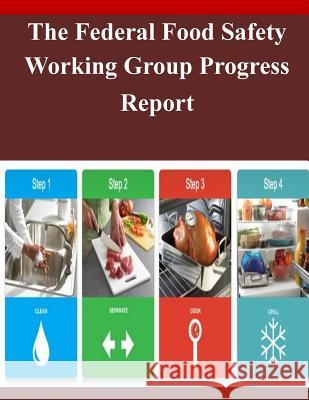The Federal Food Safety Working Group Progress Report » książka
The Federal Food Safety Working Group Progress Report
ISBN-13: 9781503219335 / Angielski / Miękka / 2014 / 32 str.
American consumers deserve to trust the safety of the food they purchase for themselves and their families. While we enjoy one of the safest food supplies in the world, it requires constant monitoring. We need to be able to rapidly identify and address risks to our food supply as a result of new disease agents, new food technologies, changes in U.S. demographic and dietary patterns, and an abundance of food imports resulting from an increasingly globalized food supply. In recent years, consumers and industry alike have been impacted by illnesses associated with food products, such as ground beef, peppers, peanut butter, spinach, shell eggs, and cookie dough, among others. While regulatory and industry efforts have over time improved food safety considerably, the Centers for Disease Control and Prevention has recently estimated that 1 in 6 Americans suffers from foodborne illness annually, resulting in 128,000 hospitalizations and 3,000 deaths per year, most of which are preventable. The public health consequences of foodborne illness remain significant. The impact reaches well beyond the number of cases. Foodborne illnesses result in billions of dollars in medical costs, as well as significant economic losses to the food industry when illness outbreaks and contamination incidents undermine consumer confidence in affected commodities, require large recalls, and diminish demand. American consumers have high expectations for the safety of the food supply. While all risks will never be eliminated, the public rightfully expects that the government and the food industry do everything that can reasonably be done to prevent food safety problems. The federal government has taken important steps to protect an increasingly complex food supply. In March 2009, President Obama created the Food Safety Working Group (FSWG), a central coordinating mechanism for the federal government's food safety activities that is led by the Department of Health and Human Services (HHS) and the U.S. Department of Agriculture (USDA). The FSWG's core mission is to strengthen federal efforts and develop short-term and long-term strategies to improve food safety. Partner agencies include HHS's Food and Drug Administration (FDA), USDA's Food Safety and Inspection Service (FSIS), and HHS's Centers for Disease Control and Prevention (CDC), as well as the Environmental Protection Agency (EPA), Department of Homeland Security, Department of Commerce, Department of State, and the Office of the United States Trade Representative. The White House Domestic Policy Council convenes the FSWG. The premise underlying the FSWG's creation is that coordination among federal agencies is essential to protect consumers in our highly diverse, global food system. Coordination and cooperation are necessary through every stage of the production and consumption process-"from farm to table." FSWG member departments and agencies thus share information and experience about all aspects of food safety. Such coordination strengthens the scientific and technical infrastructure to support a modern food safety system.
Zawartość książki może nie spełniać oczekiwań – reklamacje nie obejmują treści, która mogła nie być redakcyjnie ani merytorycznie opracowana.











